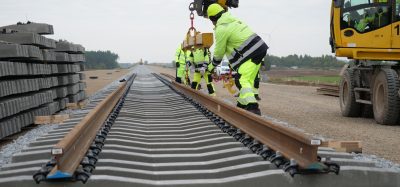CER responds to European Parliament vote on TEN-T regulation
Posted: 13 April 2023 | Elliot Robinson (Editorial Assistant - Global Railway Review) | No comments yet
While CER has welcomed the latest European Parliament position on TENT-T regulation, it has also raised potential concerns.


On 13 April, the Members of the European Parliament Transport and Tourism Committee (TRAN) adopted their position on the Commission proposal for the revision of the Trans-European Transport Network (TEN-T) Regulation. CER acknowledged the immense work undertaken by the Rapporteurs, Shadow Rapporteurs and MEPs to amend the Commission proposal and supports most of the amendments and compromises which are positive, confirming the deadlines to deploy synchronised onboard and trackside ERTMS, strengthening multimodal rail connections, the request to study a railway high speed line network to connect all Union capitals, major cities and metropolitan areas as basis of a EU high speed network, increased attention given to rail infrastructure maintenance, and a proposal to reinforce network resilience. However, the association nonetheless calls attention to several important amendments which may lead to a deterioration in the management of the entire railway system in terms of efficiency, sustainability and most importantly, safety.
- Single EU Language – The change to a single language would not only require billions of Euros in investment and training for both drivers and infrastructure managers, and disadvantage rail against other modes, it would also increase safety risks
- Traffic Management System – Traffic management must remain in the hands of Rail Infrastructure Managers who have proven technical competence and can ensure appropriate safety levels. Traffic management is a critical task and cannot be compromised
- Digital Capacity Management (DCM) – While DCM is necessary to increase capacity and simplify allocation, the system operation must not be delegated to the European Rail Agency as this will hamper the process
- Reduction of funds for significant delays – this poses a risk that more complex rail projects will be further slowed in their progress or even abandoned.
Related content you will enjoy:
CER publishes first progress report on implementation of its Ticketing Roadmap
EC approves €1.1 billion German scheme to support operators using electric traction
CER also strongly underlines that the advancement of the transition to the European Railway Traffic Management System (ERTMS) will reduce safety risks in Europe and calls for the transition to be hastened and reinforced with more funds and a stronger management. The association looks forward to further discussions between the Parliament and Council in the conclusion of the legislative process and expects improvements in terms of both ERTMS deployment and multimodal connections between rail and road/ports/airports.
“European railways need new capacity to run more trains: refurbished and new lines, multimodal connections for passenger and freight services, new high speed passenger lines, and quick progress on digital tools such as ERTMS, DCM and DAC,” Alberto Mazzola, Executive Director for CER, said. “TEN-T is the masterplan to connect all of Europe and I hope that the European Parliament and Council will soon reach a common agreement on this important file.”
OUT NOW: The Definitive Guide to Rail’s Digital Future
The rail industry is undergoing a digital revolution, and you need to be ready. We have released our latest market report, “Track Insight: Digitalisation.”
This is not just another report; it’s your comprehensive guide to understanding and leveraging the profound technological shifts reshaping our industry. We move beyond the buzzwords to show you the tangible realities of AI, IoT, and advanced data analytics in rail.
Discover how to:
- Optimise operations and maintenance with real-time insights.
- Enhance passenger services through seamless, high-speed connectivity.
- Leverage technologies like LEO satellites to improve safety and efficiency.
Featuring expert analysis from leaders at Nomad Digital, Lucchini RS, Bentley Systems and more, this is a must-read for any rail professional.
Related topics
European Rail Traffic Management System (ERTMS), Regulation & Legislation, Safety, Signalling, Control & Communications
Related organisations
Community of European Railway and Infrastructure Companies (CER), European Parliament







